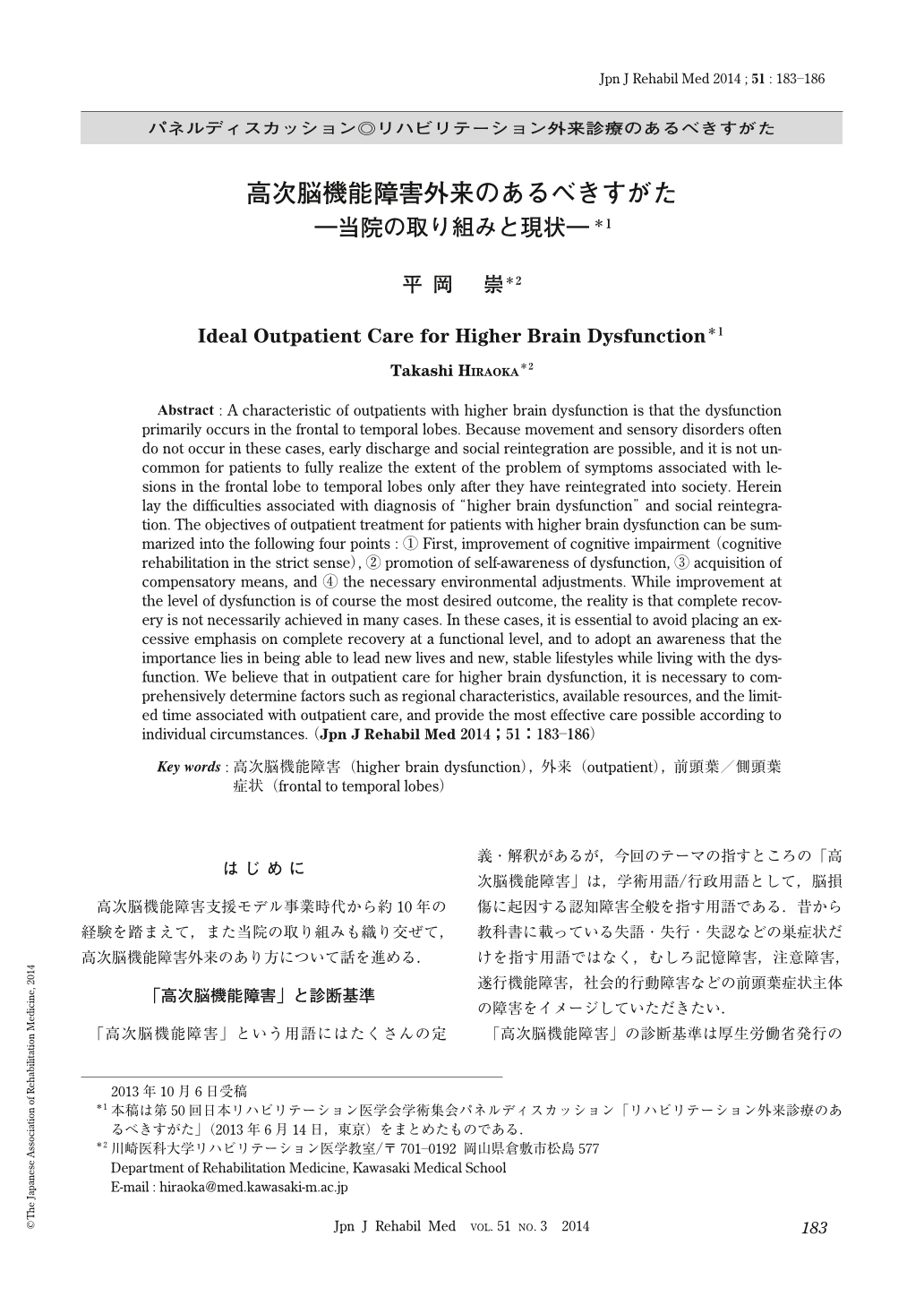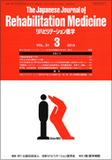Japanese
English
- 販売していません
- Abstract 文献概要
- 1ページ目 Look Inside
- 参考文献 Reference
はじめに
高次脳機能障害支援モデル事業時代から約10年の経験を踏まえて,また当院の取り組みも織り交ぜて,高次脳機能障害外来のあり方について話を進める.
Abstract : A characteristic of outpatients with higher brain dysfunction is that the dysfunction primarily occurs in the frontal to temporal lobes. Because movement and sensory disorders often do not occur in these cases, early discharge and social reintegration are possible, and it is not uncommon for patients to fully realize the extent of the problem of symptoms associated with lesions in the frontal lobe to temporal lobes only after they have reintegrated into society. Herein lay the difficulties associated with diagnosis of “higher brain dysfunction” and social reintegration. The objectives of outpatient treatment for patients with higher brain dysfunction can be summarized into the following four points : ① First, improvement of cognitive impairment (cognitive rehabilitation in the strict sense), ② promotion of self-awareness of dysfunction, ③ acquisition of compensatory means, and ④ the necessary environmental adjustments. While improvement at the level of dysfunction is of course the most desired outcome, the reality is that complete recovery is not necessarily achieved in many cases. In these cases, it is essential to avoid placing an excessive emphasis on complete recovery at a functional level, and to adopt an awareness that the importance lies in being able to lead new lives and new, stable lifestyles while living with the dysfunction. We believe that in outpatient care for higher brain dysfunction, it is necessary to comprehensively determine factors such as regional characteristics, available resources, and the limited time associated with outpatient care, and provide the most effective care possible according to individual circumstances.

Copyright © 2014, The Japanese Association of Rehabilitation Medicine. All rights reserved.


